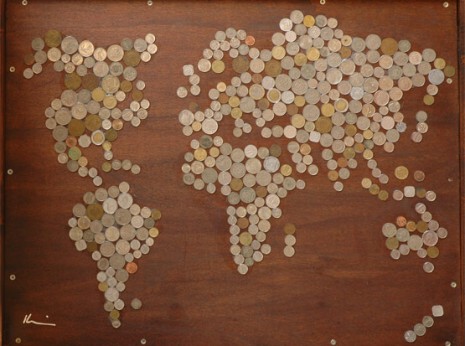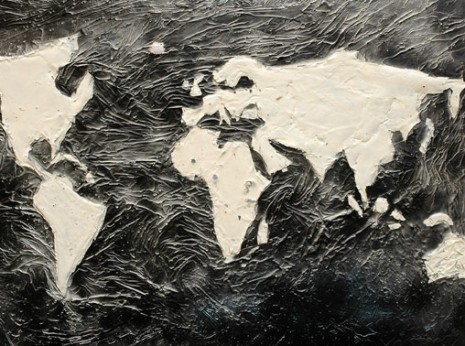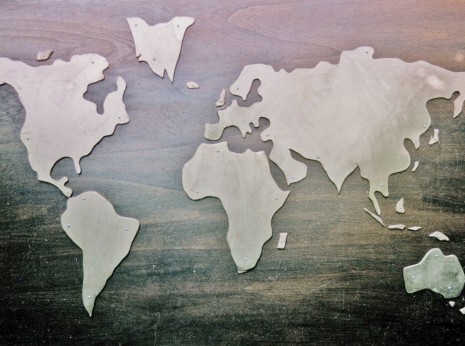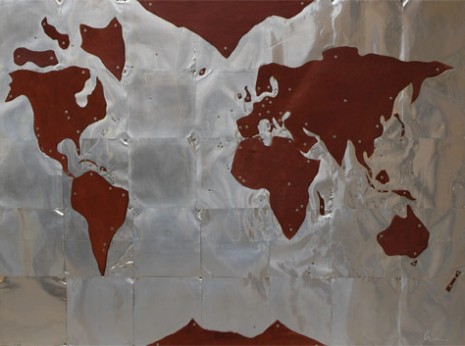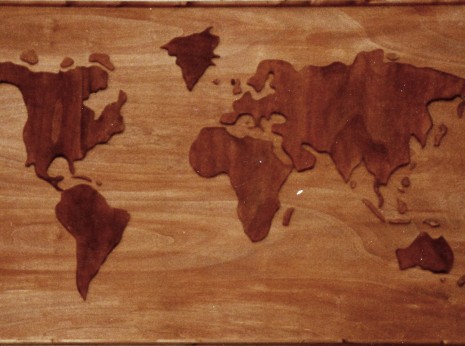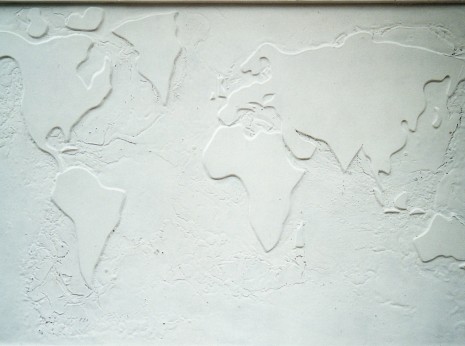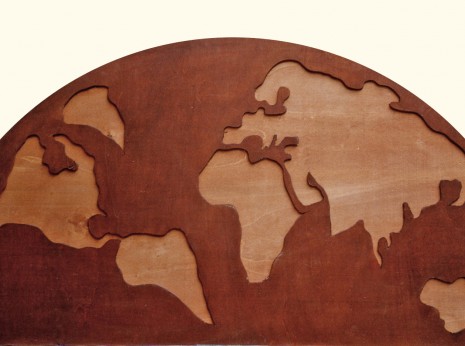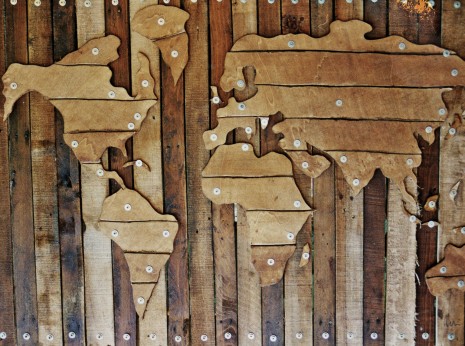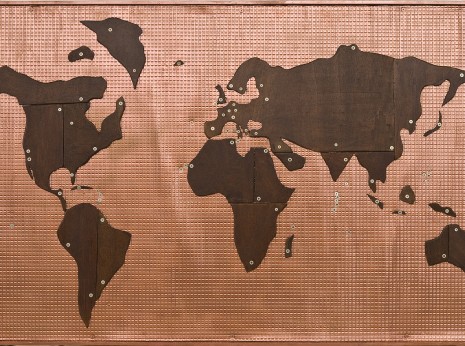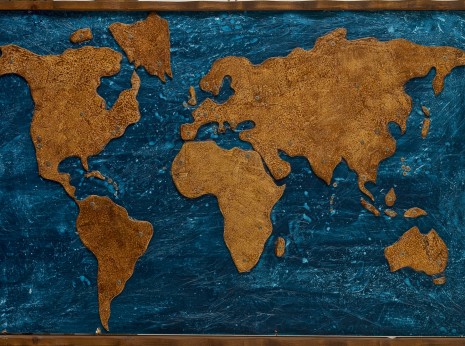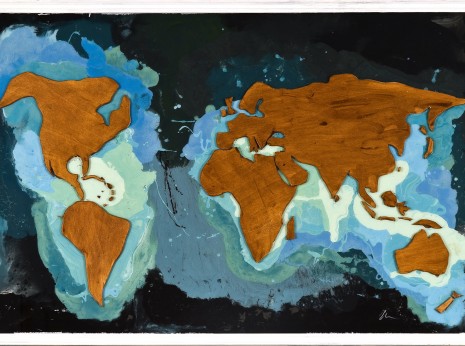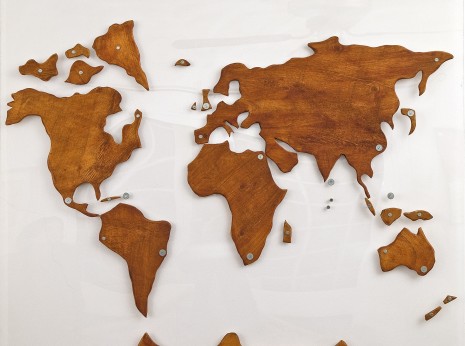Mappe di nuovi Mondi
“Da tempo, in effetti da anni, gioco con l’idea di articolare lo spazio della vita – bios – in una mappa”, dice Walter Benjamin in Cronaca berlinese. La vita in una mappa, una carta geografica. Perché il tempo, la storia non bastano. Per il racconto ci vogliono una mappa, o una carta geografica. Davanti al mondo, disteso su una superficie piana, lineare, circoscritta è possibile abbandonarsi al piacere di immaginare incontri, attraversamenti, abbandoni. È uno spazio altro, è lo spazio del viaggio, del cambiamento, della possibilità. Una mappa ci porta a scoprire nuovi mondi, come gli esploratori rinascimentali.
Non è mai sbagliata perché la precisione non è il suo scopo, è un progetto, un disegno astratto dei luoghi che vorremmo visitare. Cosa fanno le carte geografiche se non rappresentare in una superficie piana il globo con linee, tratti, ombre, colori e segni convenzionali? Le mappe sono rappresentazioni simboliche. Spazi di vita, proiezioni di desideri, figure del sogno. Anche Marcello Reboani, forse, aveva un sogno quando, bambino, studiava non l’Atlante ma con l’Atlante. Un compagno di viaggi, per scoprire mondi nuovi. Così, da esploratore, è diventato artista. Il passaggio lo racconta Wassily Kandinsky: “In ogni nuova, vera opera d’arte viene portato a espressione un nuovo mondo, mai esistito prima. Ogni vera opera d’arte è dunque una nuova scoperta: accanto al mondo già noto, si pone un mondo nuovo, finora sconosciuto”. Tutto comincia con un lungo viaggio in barca a vela nell’Oceano Indiano, nel 1982. Sei mesi a girovagare, da Manila al Kenya. Un mese a Ceylon, scali in Indonesia, alle Seychelles, nelle isole Chagos, le Oil Islands che dal 1965 sono “Territorio britannico dell’Oceano Indiano”, sede di una base militare degli Stati Uniti, oggi la più grande riserva marina del mondo. Qui, nella chiesa portoghese, Marcello dipinge un affresco con i carboncini trovati per strada. Objet trouvé. Come i chiodi, le viti e i bulloni che compongono le sue mappe. Sì, le mappe vengono da qui. Da quell’Oceano immenso in cui perdersi, una distesa senza confini, dove il tempo scorre fluido, senza intervalli. Il tempo della natura: passato e futuro, un solo istante. Com’è grande, l’Universo. Laggiù, un punto. E’ qui, è casa, è la Terra. Una distrazione dal blu, le mappe, per veder apparire i continenti. Imprecisi ma reali. Per dare confini e dimensioni al mondo. Un gioco a smontare e ricomporre la geografia dell’universo, come ne Le monde au temps des surréalistes, opera del 1929, dove ogni parte del globo è messa in discussione. Perché non esistono mappe neutrali, ogni mappa è il risultato di scelte, selezioni, traduzioni, punti di vista di chi realizza l’opera. Un atlante delle emozioni che nasce dal viaggio e trova espressione nella materia. Legno, rame, alluminio. È questa la carne del sogno, la sostanza delle mappe immaginarie di Marcello. Una sfasatura, un anacronismo, una distrazione. E lo spazio della vita è là, su quella carta, espressione di un mondo nuovo, mai esistito prima. “La formula per rovesciare il mondo”, diceva Guy Debord nel 1959, “non l’abbiamo trovata nei libri ma vagabondando”.
Maps of new worlds
‘‘For many years, actually, I have indeed been playing with the notion of articulating the space of life – Biosgraphically in a map ’’, said Walter Benjamin in Berlin Chronicle. Life in a map, in a geographical map since time and history are not enough. For the story a map is required, or a geographical map. In front of the world outstretched on a flat surface, linear, circumscribed, it is
possible to abandon oneself to the pleasure of imagining encounters, crossings, and desertions. It is another space; it is the space of a voyage, change, and possibilities. A map allows us to discover new worlds, like renaissance explorers. It is never precise because precision is not its purpose; it is both a project and an abstract drawing of the places we would like to visit. What do geographical maps do, if not represent the globe on a flat surface with lines, traces, shadows, colours and conventional signs? Maps are symbolic representations. They are the spaces of life and a projection of desires, figments of dream. As a child even Marcello Reboani had a dream maybe, when he didn’t study the Atlas, but he studied with the Atlas. Travelling companion for the discovery of new worlds. So from explorer, he becomes an artist. Wassily Kandinsky recounts this changeover: ‘‘ In every truly new work of art a new world is created that has never existed. Thus, every true work of art is a new discovery; a new, previously unknown one is uncovered’’. It all began in 1982, with a long sailing trip in the Indian Ocean. From Manila to Kenya he wandered around for six months. A month in Ceylon, ports of call in Indonesia, the Seychelles, the Chagos islands, the Oil Islands, which from 1965 were denominated ‘‘British Indian Ocean Territory’’, and housed
a United States military base, and today the world’s largest marine reserve. Here, in the Portuguese Church, Marcello paints a fresco with the charcoals he finds in the street.
Objet trouvé. Like the nails, the screws and the bolts that compose his maps. Yes, this is where the maps come from. From that immense Ocean where you can lose yourself: an expanse without confines, where time flows fluid, without intervals. The time of nature, past and future, a single instant. How vast is the Universe. Down there, a dot.
It’s here, it’s home, it’s the Earth. Maps, a distraction from all the blue needed for observing the continents appear. Not accurate but nonetheless real. Bestowing boundaries and dimensions to the world. A game for dismantling and recomposing the geography of the Universe. For just like in Le monde au temps des surréalistes, a work from 1929, every part of the globe is questioned. Because there are no neutral maps, every map is the result of choices, selections, translations, with the viewpoint of he who produces it. Wood, copper, aluminium. This is the meat of the dream, the substance of Marcello’s imaginary maps. A phase shift, an anachronism, a distraction. And on that paper is where the space of life is, as an expression of a new world that has never existed before. ‘’We didn’t try to find the formula for overthrowing the world in books’’, said Guy Debord in 1959, ‘’but by roaming around’’.

